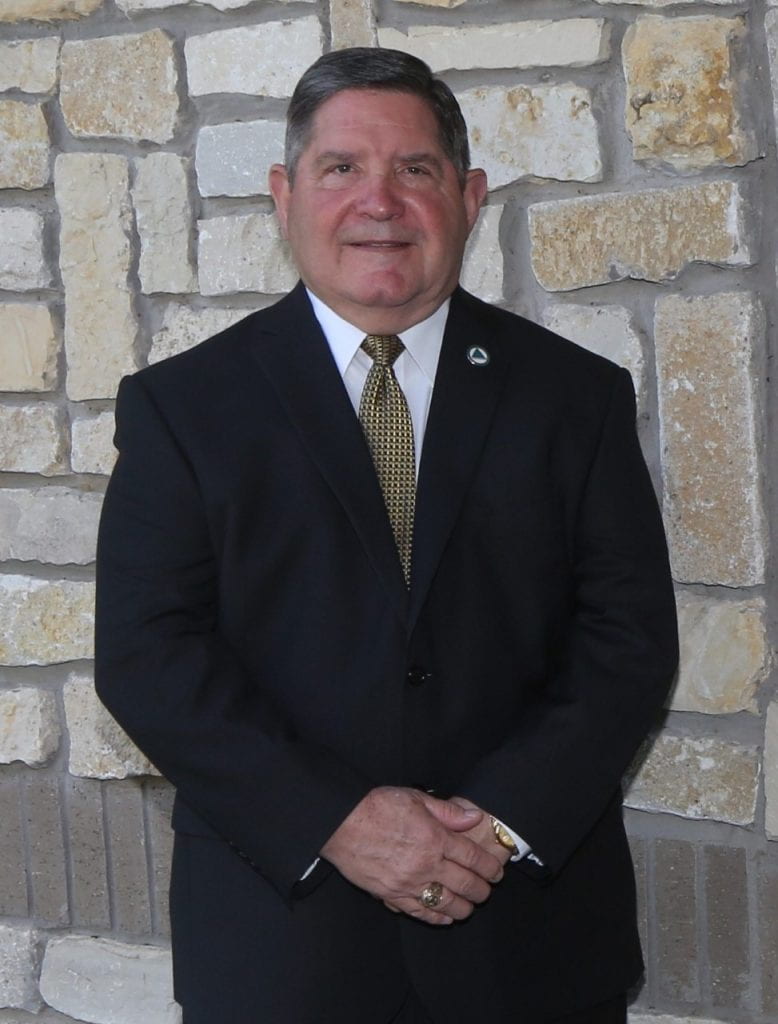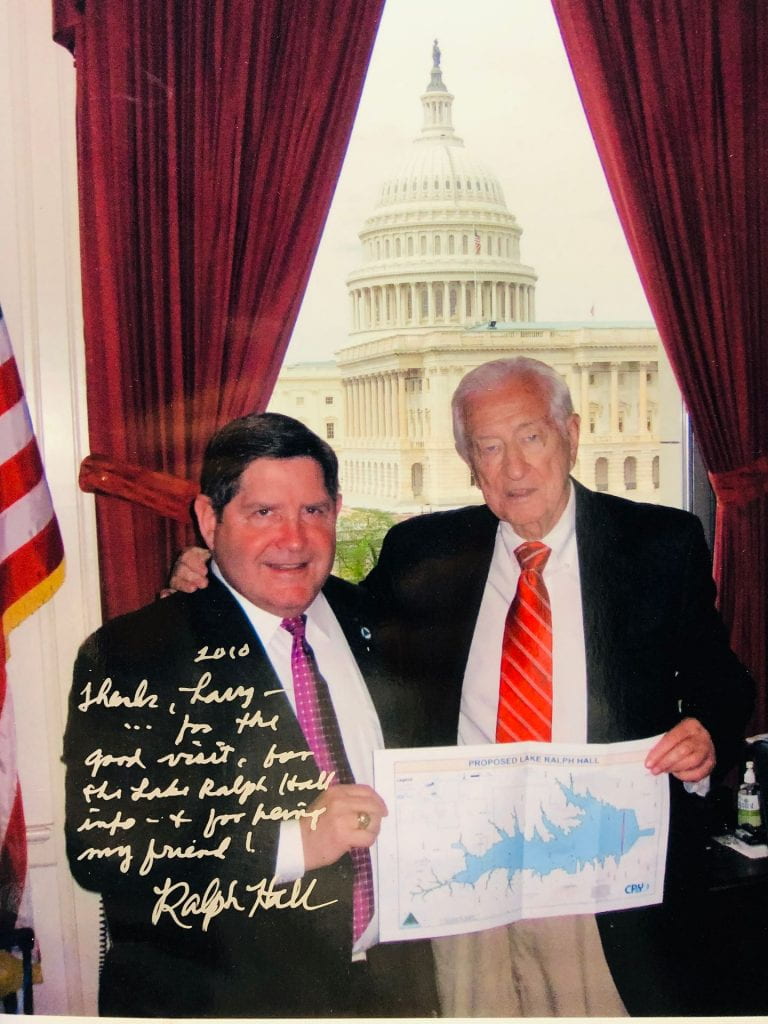Executive Director, Upper Trinity Regional Water District
In this issue’s Q&A, Texas+Water Editor-in-Chief, Dr. Todd Votteler, interviews Larry N. Patterson, P.E., Executive Director of the Upper Trinity Regional Water District (UTRWD).
Patterson, a licensed professional civil engineer, has over 40 years of experience in the water and wastewater industry. He joined Upper Trinity Regional Water District in 2002 after his retirement from the Dallas Water Utilities Department where he served as Assistant Director for Wastewater Operations. Patterson began his employment with Upper Trinity as the District’s Chief Engineer and steadily progressed through positions of increasing responsibility leading to his appointment as Executive Director in March 2018. Upper Trinity operates water and wastewater facilities that serve 25 communities located in Denton and Collin counties.
He is an active member of American Waterworks Association, Water Environment Federation, Water Environment Association of Texas, and American Society of Civil Engineers and served in leadership positions with both the Texas and National Association of Clean Water Agencies.
Patterson also served for 30 years in the Texas Army National Guard as an engineering officer, ending his military career achieving the rank of Brigadier General. He holds a Bachelor of Science in civil engineering from Texas A&M University and a Master’s degree in environmental sciences from the University of Texas at Dallas.
What is the history and mission of the Upper Trinity Regional Water District?
Upper Trinity is a conservation and reclamation district created by the Texas Legislature in 1989 for the benefit of cities and utilities in the Denton County area. Its mandate is to develop regional plans for water utility services and to provide both water and wastewater services on a wholesale basis to Upper Trinity’s members and customers within its service area, including all of Denton County and portions of Dallas and Collin Counties. See our website for a list of cities/members currently served.
The U.S. Army Corps of Engineers recently issued the permit to UTRWD for the North Sulphur River in Fannin County. The $490 million project know as Lake Ralph Hall has been in progress since initial permits were filed in 2006. The District received a water right for the stored water in Lake Ralph Hall from the Texas Commission on Environmental Quality in 2013. Once Ralph Hall is completed what will the firm yield of the reservoir be, and what will the cost per acre-foot be?
Once complete and fully operational, Upper Trinity anticipates Lake Ralph Hall will provide a firm supply up to 60,399 acre-feet per year, which includes reuse water.
Who will be the customers for water from Ralph Hall?
Lake Ralph Hall will be integrated into Upper Trinity’s regional raw water supply system. Those cities and utilities who will benefit from the water from the new reservoir include current Upper Trinity water customers, as well as potential future customers as identified in the Region C Water Plan, primarily located along the boundaries of the Upper Trinity’s existing service area. Additionally, Fannin County communities within the Sulphur River Basin will have the benefit of using water from Lake Ralph Hall to satisfy their critical need for a reliable water supply.

How far away are these customers from the reservoir site?
Lake Ralph Hall will be located just north of the City of Ladonia in southeast Fannin County, approximately 70 miles northeast of Upper Trinity’s headquarters in Lewisville, Texas. It should be noted that due to advanced planning by Upper Trinity and the City of Irving for transport of future water supplies from the Sulphur River basin, the raw water transmission pipeline from Jim Chapman Lake was oversized to accommodate the water from Lake Ralph Hall.
A 32-mile pipeline is all that is needed to connect to the existing raw water transmission pipeline, bringing this new supply directly to the Tom Harpool Water Treatment Plant or diverted into Lewisville Lake for treatment at the Thomas E. Taylor Water Treatment Plant. This strategic planning will enable Upper Trinity to save capital costs and realize certain operational efficiencies.
Will there be significant flood storage in Ralph Hall? How will flood and water supply operations be managed for the reservoir?
Lake Ralph Hall is authorized for water supply and recreation only.
Will there be public access to the lake and any surrounding lands that are associated with it?
The District intends for Lake Ralph Hall to be a recreational asset for Ladonia and the other communities within Fannin County. Upper Trinity is still formulating its plans for recreational opportunities on and around the lake.
What are the environmental impacts of the project and what mitigation will be provided to compensate for these impacts?
The U.S. Army Corps of Engineers, Fort Worth District recently completed a comprehensive Environmental Impact Statement (EIS) for Lake Ralph Hall. The EIS documented the impacts Lake Ralph Hall will have on aquatic resources, which include approximately eight acres of emergent wetlands and approximately 85 miles of intermittent and ephemeral streams.
Upper Trinity has agreed to provide mitigation for these aquatic resources by creating approximately eight acres of emergent wetlands and by enhancing, restoring and creating approximately 52 miles of higher quality intermittent and ephemeral streams in three mitigation zones adjacent to the new lake.
Now that Lake Ralph Hall has been approved and Bois d’Arc Lake is also under construction after decades without a major new reservoir in Texas, do you think these projects signal the beginning of a new period of reservoir construction in Texas?
We’re hopeful that a more efficient and streamlined process for planning, permitting and constructing new reservoirs in Texas will be the outcome of the decade’s long effort by the Upper Trinity and North Texas Municipal Water District.
The institutional knowledge and procedures developed for enhanced coordination and collaboration by the interested state and federal agencies provide the promise or opportunity for a more expedited permitting process. The citizens of Texas deserve everyone’s best efforts to do all they can do to meet our future water needs in a responsible and timely manner.


